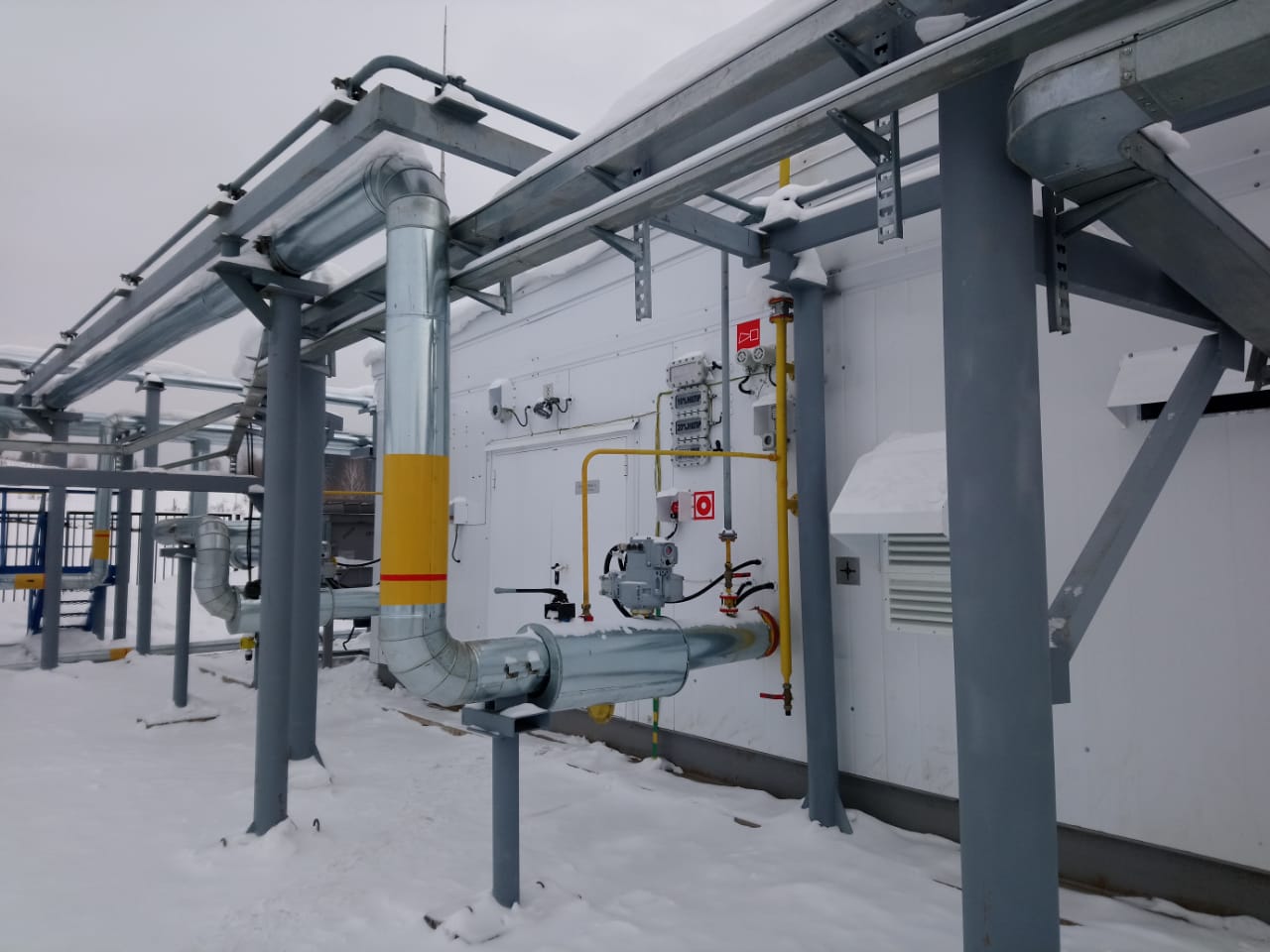In order to ensure personnel safety and convenience of maintenance, equipment may be installed in heated buildings/enclosures equipped with necessary utility systems (ventilation, fire alarm, gas contamination control, lighting, hot-water heating, and automatic firefighting).
Depending on the type of premises, a specific ventilation system is selected.
There are the following types of industrial ventilation systems based on the principles of functioning.
Natural ventilation. It is based on the natural circulation of air streams with different temperature, pressure, and density. The cold stream of air displaces the lighter warm stream. In an industrial building, this process can originate from breaches in the building’s envelope, leakages through windows and doors, plenum spaces, etc. Natural ventilation depends on atmospheric conditions, wind force and direction, and season (ventilation in winter carries on better due to a stronger draft). This ventilation technique cannot suit all production facilities, especially the ones with harmful exhausts form operating equipment. But it may be installed in buildings and structures associated with farming and the agricultural industry.
Mechanical ventilation. It addresses the issue of avoiding the contamination of indoor air by specific high-emission sources by capturing airborne contaminants before they are spread into the environment. This can include water vapor control, lavatory bio-effluent control, solvent vapors from industrial processes, and dust from wood- and metal-working machinery. Its main function is the evacuation of spent air stream from the work zone, prevention hazardous vapors ingress in other premises, and fresh outdoor air (treated or not treated) supply as a common or dedicated stream. It is performed by the use of mechanical air intake and exhaust systems (air intake and exhaust fans, roof-mounted units). Mechanical ventilation is the most efficient technique of air streams cleaning and circulation inside an industrial workshop.
Heating. The following heating system types can be applied depending on the type of premises, its volume, and external infrastructure: steam, hot-water, air, electric. The use of one of the heating systems is conditional upon Customer individual requirements.
Lighting. Artificial and emergency illumination of all premises and maintenance platforms shall be provided as per the norms and regulations of SP (Code of Regulations) 52.13330.2011 and VSN (Industrial Construction Norms) 34-91. Standby and emergency escape lighting of premises shall also be provided. The types of lamps and wiring shall conform to the environment, scope and nature of work done. Norms and quality metrics of illumination, lighting system maintenance and control convenience shall be considered. Each entrance door shall be outfitted with an external explosion-proof lamp.
Firefighting. Firefighting shall be in accordance with the requirements of SP 5.13130.2009, SP 10.13130.2009. Primary fire extinguishing equipment shall be provided as per Federal Law dd. July 22, 2008, No. 123-FZ.628950.
There shall also be provided modular automatic fire extinguishing units (gas or clean agent fire extinguishing systems, dry powder fire extinguishing systems, or analogous). Various types of agents can be applied as a fire extinguishing substance. A local automatic fire extinguishing system can supply an extinguishing substance at the command of both the local fire alarm system and the upper tier fire alarm system.





